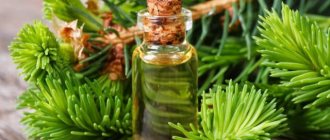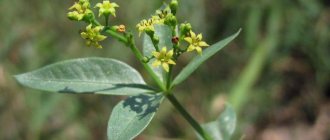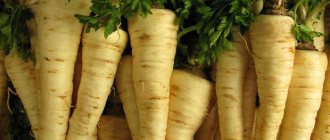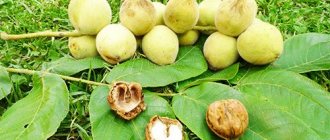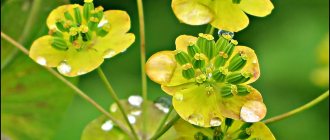Cherry plum is a fruit with unique qualities. It is extremely rich in dietary fiber, contains large amounts of vitamin C and potassium, but at the same time its calorie content is almost zero. These properties make cherry plum a useful product for anyone who wants to lose weight, as well as for people with diabetes and hypertension. With its regular consumption, vitality is restored and the immune system is strengthened. Cherry plum helps fight infections and prevent many diseases.
Facts about cherry plum
Content:
- Facts about cherry plum
- Beneficial features
- The nutritional value
- Cherry plum in folk medicine: benefits and harms
- Treatment with fruits
- How to use
- Cherry plum in the beauty industry
- Cherry plum cosmetics at home
Cherry plum (botanical name Prunus cerasifera) belongs to the stone fruit family and is a member of the Rosaceae family. There are dozens of varieties of cherry plums that are grown for their fruits [1]. Meanwhile, there are also decorative specimens. Such plants have unusual leaf colors (for example, purple) and beautiful fragrant flowers. All varieties of cherry plum bear fruit, but the taste is different in all [2]. The most famous are Monomakh, Gold of the Scythians, Nesmeyana, Sarmatka, Cleopatra, Gek [3].
Asia is considered the birthplace of this tree [4]. Many centuries ago, the cherry plum was bred from the common fruit plum. Due to its high resistance to frost and drought, it quickly spread to different parts of the planet [5]. However, cherry plum is easily susceptible to the harmful effects of pests and diseases [6]. These trees grow quickly, but their lifespan is usually no more than 20 years. They propagate by seeds or cuttings. Cherry plum trees are often used as a rootstock for some varieties of plums.
The benefits of cherry plum as an edible product
From one mature tree you can harvest up to 300 kg of harvest. The fruits of cherry plum are large - up to 3 cm in length. The shape is round, slightly elongated. The pulp is sweet, but more sour compared to ordinary plums. Actually, this is the main difference between cherry plum and other representatives of the plum genus.
The fruit contains about 7% organic acids and 14% sugar. Rich in calcium, carotene, vitamins C and E.
Many dishes and drinks are prepared from cherry plum: syrups, compotes, jellies, marshmallows, jam. The fruits are suitable for consumption in any form: fresh, canned, baked. Unripe fruits have a special “sourness”, so they are added to many sauces and used as a seasoning for first and second courses.
In the popular Georgian sauce "Tkemali", cherry plum is the main component. By the way, sometimes it is called that - tkemali. Another name is cherry plum
There are many good recipes with cherry plum juice. One of the simplest is homemade lemonade. Freshly squeezed cherry plum juice is rich in vitamins and other nutrients. Therefore, nutritionists advise drinking a homemade drink instead of a store-bought equivalent with preservatives.
What kind of fruit is cherry plum
Beneficial features
Cherry plum is useful for people with a variety of health problems. Fresh fruits have a good effect on the body when:
- vitamin deficiency;
- chronic fatigue;
- nervousness, anxiety;
- weakened immune system;
- infectious diseases;
- disorders of the respiratory system;
- cardiovascular pathologies;
- thinning of bone tissue and other bone diseases;
- swelling;
- overweight;
- diabetes;
- loss of appetite;
- slow digestive process;
- constipation [7].
In addition, being a good source of vitamin C, cherry plum prevents scurvy and removes toxins from the body. This sour fruit is known to help relieve colds and coughs and is a good diaphoretic. Doctors also advise people with low acidity gastritis to consume more cherry plum. Among other things, this excellent fruit promotes rapid healing of wounds.
What harm can cherry plum cause?
The health benefits and harms of cherry plum are something that is definitely worth keeping in mind. After all, any fruit or berry can equally both strengthen our body and harm it.
In particular, if you overeat cherry plums, you can get poisoned by it. This will cause stomach pain, diarrhea, nausea and so on. In particular, frequent abuse of this fruit will increase the level of glucose in the blood, and this can significantly worsen the course of chronic diseases, if, of course, you have them.
In any case, it is worth consulting with a specialist in advance if you suffer from any health problems. Also, you should not eat the seeds - this can be dangerous due to the hydrocyanic acid content.
The nutritional value
Cherry plum is a very good remedy for weight loss. Do you want to get rid of extra pounds? You can use a ridiculously simple and accessible recipe - drink a glass of cherry plum juice three times a day (before meals) for 2 weeks.
This fruit contains a lot of water, and its calorie content does not exceed 40 kcal per 100 g [8]. Also, a 100-gram serving of cherry plum provides approximately 2.5 g of fat, 8 g of carbohydrates, and about 1.5 g of protein. It has almost no sodium, but quite a lot of potassium (200 mg/100 g, which is almost 6% of the daily value), which makes cherry plum an excellent diuretic. Thus, this fruit is ideal for removing excess fluid from the body, which helps in weight loss. In addition, high potassium content is beneficial for people with high blood pressure and cardiac arrhythmia, since a deficiency of this nutrient leads to these health problems.
In addition, 100 g of cherry plum contains approximately 5 mg of dietary fiber, which is almost 20% of the recommended daily intake. Thanks to this, cherry plum softens stool, reduces the time it takes for digestive products to pass through the intestinal tract, and reduces the absorption of sugar by the intestines, which is an important factor for people on a diet, as well as for diabetics.
Cherry plum is a fruit very rich in minerals and vitamins [9]. 100 g of product contains:
- vitamin A – 5% of the daily value;
- vitamin C – 13% of the daily value;
- calcium – 5% of the daily value;
- iron – 5% of the daily value.
The fruits of the cherry plum are a real storehouse of organic acids and vitamins, including group B. This mineral and vitamin complex makes the fruit an important component for maintaining physical and mental balance and gives vital energy. Due to its richness in vitamins and minerals, cherry plum is an excellent product for low-calorie diets, suitable for people involved in sports, and serves as an important component in programs for losing excess weight.
What is cherry plum fruit or berry?
Many consider this fruit to be a berry due to its small size. Based on botany, berries are multi-seeded fruits with thin skin and juicy pulp.
However, the fruit contains only one seed, often reaches large sizes and grows on trees. Therefore, cherry plum is a fruit.
How to distinguish a plum from a cherry plum
Cherry plum is one of the forms of domestic plum. They are similar in appearance, but differ in their taste and nutritional properties.
Cherry plum and plum, what's the difference?
Since it has low frost resistance, it grows mainly in the south: in the Caucasus and Asia Minor. Today, breeders have solved this problem, and now trees grow even in the center of our country.
Inflorescences and leaves appear almost simultaneously, look very aesthetically pleasing, and are therefore often used by florists. Flowers can be white or pink. The trees are more precocious and begin to bear fruit 2 years earlier. The fruits are medium in size, but almost always red-yellow in color with a waxy coating, and ripen in August and September. You can harvest much more from one tree than from a plum. It is easy to grow as it has few diseases and pests. The peculiarity of fruits of all varieties is that the stone is difficult to separate from the pulp, and the fruit is difficult to dry.
Plum has high winter hardiness and therefore grows everywhere. Caring for and growing trees is quite problematic: they are more susceptible to diseases and pests. The dark blue fruits ripen as early as early summer in some parts of the country, and the plum can then be dried into prunes. The bone is easily separated from the pulp.
Cherry plum varieties
There are typical Caucasian, Central Asian wild and large-fruited varieties.
Most of the varieties grown in gardens are of the large-fruited type. They have different shades. There are many subspecies of it (Georgian, Armenian, Iranian, Crimean, Tauride, Pissarda, Balkan, Indian), and they are divided according to cultivation regions. These subspecies differ in taste and are used in different ways. For example, the Crimean cherry plum tastes like dessert, while the Georgian tkemali cherry plum is tart and sour and is used in the preparation of the spicy tkemali sauce.
The cherry plum tree blooms with white and pink flowers. Moreover, they appear before the buds have yet blossomed. Some subspecies, in particular the red pissard cherry plum, are used as landscape decorations due to their colorful leaves, fruits and pink flowers.
Also read on our website: Passion fruit: photo of the fruit, how to eat it correctly, benefits and harm
All varieties grown in our country are produced from Crimean cherry plum and have different colors. Moreover, the composition of the fruit is determined by its color. For example, black fruits contain a lot of pectins and anthocyanins, which protect the body from cancer, and yellow cherry plum contains a lot of sugars and citric acid.
The best hybrid varieties of cherry plum (“Traveller”, “Shater”, “Kuban Comet”) are considered the most fruitful and produce more than 40 kg of fruit per year. The varieties “Obilnaya” and “Globus” have large fruits weighing about 60 grams. The Burbank Giant culture, reaching a quarter of a kilogram, is considered the largest of all.
It should be noted that the fruit crosses well with other crops, forming new hybrids. This property is widely used by breeders. Thus, for example, nectarine, plumcote, and Fergana plum were formed.
Wild varieties are not used in gardening because they are not cultivated.
Harvest time divides the varieties into early (late July - early August: “Traveler”, “Comet Early”, “Tent”, “Kremen”), medium (early - mid-August: “Kuban Comet”, “Anastasia”, “Kometa” late") and late (end of August - September: “Cleopatra”, “Huck”).
Cherry plum in folk medicine: benefits and harms
Since ancient times, folk healers have resorted to cherry plum as an effective medicine. For centuries, cherry plum flowers and fruits have been used to get rid of many ailments. Our ancestors even used seeds from these fruits to make activated carbon.
Ancient healers knew nothing about the unique chemical composition of these sweet and sour fruits, but they were sure that with the help of cherry plum they could improve digestion and blood circulation. Centuries of experience have shown that these fruits are especially useful for expectant mothers and the elderly, and an infusion of cherry plum flowers helps restore the health of the kidneys, liver and male reproductive system.
The beneficial effects of cherry plum on the nervous system have been known since ancient times. When stressed, the fruits of this fruit tree calm and relax. And with high blood pressure, it is enough to eat about 200 g of fruit to improve your well-being.
Even ordinary cherry plum compote has healing properties that are recognized by official medicine. To strengthen the immune system and provide additional vitamins, doctors advise patients to drink decoctions of sour fruits. It is believed that these fruits are effective for biliary dyskinesia, liver dysfunction and diabetes.
However, the high concentration of organic acids makes cherry plum undesirable in the diet of people with high acidity and stomach ulcers. People with frequent diarrhea or illnesses accompanied by loose stools should not abuse the fruit.
Why is cherry plum considered beneficial?
The secret of the benefits of cherry plum for the body lies in its composition. These fruits contain:
- Natural acids: tartaric, malic, citric and, especially, ascorbic (23% of the composition). Acids of organic origin are beneficial, and the high content of vitamin C helps improve immunity.
- Important microelements: sodium, potassium, phosphorus, magnesium, retinol, copper.
- Oils that fruit seeds are rich in.
- Natural saccharides – glucose and fructose (10%). The calorie content of the fruit, however, is low, only about 30 kilocalories per 100 grams.
- Pectin (1%) significantly improves digestion. There is much more of this substance in dark cherry plum fruits.
Why eat cherry plum
Cherry plum has undeniable advantages.
- Prevention of cardiovascular diseases. Fruits help fight cholesterol, prevent heart attacks, strokes and atherosclerosis. Potassium and magnesium nourish the heart.
- Help in losing weight. Often the cause of excess weight gain is the accumulation of waste, toxins and other stagnation. The plant fibers contained in cherry plum help cleanse the gastrointestinal tract, and various diets that include it give more effective results.
- Digestive system support. Pectin improves the microflora of the stomach and promotes good absorption of nutrients and important microelements from the intestines.
- Immune support. They help the body resist diseases during the off-season and reduce the frequency of colds.
- Source of antioxidants. They help cleanse yourself of radionuclides and harmful salts, promote the removal of bile and the proper functioning of the liver.
- Sedative effect. The fruits of cherry plum, when consumed regularly, help normalize the emotional background, relieve central nervous system excitement, normalize sleep and relieve nightmares.
- Important vitamin A (retinol) affects the condition of the skin and hair. After just a month of regular use, the skin becomes clearer and the hair becomes stronger.
- Acceleration of metabolic processes. Cherry plum fruits and juice increase appetite and speed up metabolism.
Bones are also beneficial
The oil squeezed from the seeds is no worse in quality than olive or almond oil.
It also has an interesting feature - due to the beneficial glycoside amygdalin.
It acquires bactericidal properties and is used in disinfecting cosmetics and medical soap.
- The oil has a rich, pleasant aroma, which allows it to be used in perfumery.
- After the oil is squeezed out of the pit, what remains is protein-rich meal. It is used as natural casein.
Natalia Rusakova
Food Expert
Absorbent preparations are produced from the seed; activated carbon from cherry plum perfectly cleanses the intestines of toxins. Also used in industry for the purification of various substances.
— Natalya Rusakova Food expert
Treatment with fruits
Among the recipes of traditional medicine you can find hundreds of treatment recommendations based on the use of cherry plum. Here are the most popular and effective recipes.
Recipe for a healthy liver
To cleanse the liver and restore its function, use an infusion of cherry plum flowers. To prepare it you will need 20 g of flowers and a glass of boiling water. The mixture is wrapped and infused for 2 hours. Take this medicine 100 ml morning and evening.
Recipe for cough treatment
This ancient recipe is made from the bark of the cherry plum tree. Approximately a tablespoon of crushed bark is poured into 500 ml of water and boiled for 5-7 minutes over low heat. The cooled broth is filtered and taken 3-4 times a day, 100 ml.
Recipe for colds
An infusion of cherry plum flowers is considered an effective remedy against colds. Pour approximately 40 g of flowers into half a liter of boiling water. Leave for several hours. Drink half a glass at least 3 times a day.
Recipe for treating constipation
A decoction of dried cherry plum will help improve intestinal function and cure chronic constipation. Pour 500 ml of boiling water over 3-4 tablespoons of dried fruits and boil for about 5 minutes. Infuse the product for several hours. Drink 3 times a day before meals for people prone to constipation. Continue treatment until stool is completely normal.
How to use
Ideally, it is better to consume cherry plum raw or drink freshly squeezed juice from it [10]. In this case, all vitamins and nutrients are preserved. In addition, these sour fruits are used to prepare sauces for meat, for jams, jellies, compotes, marmalades and even wine.
In culinary recipes there is an unusual combination of cherry plum and garlic, which gives a special taste to the finished dish [11]. In addition to fresh fruits, dried cherry plum fruits are used for cooking.
Cherry plum in the beauty industry
In the cosmetics industry, cherry plum is also held in high esteem. Creams and masks, decoctions for strengthening hair and soap - and this is not the entire list of products in which cherry plum extract can be found. If we talk about the benefits of this fruit in cosmetology, then, first of all, it is worth remembering the antioxidant properties of cherry plum [12]. Containing vitamins A and C, it is an effective component in products that slow down skin aging. Cosmetic products containing cherry plum extract, as well as the fruits themselves, which must be consumed throughout the fruiting season, will help improve the condition of the epidermis.
Fruit seeds also have no less beneficial properties. They serve as a source of oil, the properties of which are similar to the extremely beneficial almond oil. Cherry plum seed extract is used in perfumery and cosmetology for the production of medicinal soap.
In addition to expensive creams with cherry plum extract, there is another, cheaper, method of using these fruits to improve the condition of the skin. For example, a face mask made from cherry plum pulp is suitable as a budget but very effective “preparation”. To do this, just soften the ripe fruits and apply this fruit puree to the skin. Leave for 20 minutes. This product cleanses the skin, lightens age spots and moisturizes.
Preparation and storage
For harvesting, choose ripe fruits with a pleasant smell, without dents or damage. A light white coating on the fruit is quite normal. If the fruits are very soft, then they can be stored in the refrigerator for no more than a day.
For the winter, the fruits can be frozen, dried, and prepared into delicious jam, jam, jelly or compotes. An amazing tkemale sauce is made from it; the recipe is on our website.
To freeze the fruits, wash them, dry them, put them in bags, and place them in the freezer for long-term storage until the next harvest.
For home drying, it is best to use an electric dryer for vegetables and fruits or in the oven. In Central Asia, the fruits are dried naturally under the hot sun, but this process is very long, and besides, insects and flies land on the cherry plum and dust collects.
Therefore, it is best to resort to kitchen appliances. Dried cherry plum practically does not lose its beneficial properties, it is an excellent dessert, a natural delicacy, much better than any chocolate candy. Good for decorating desserts and homemade baked goods.
Cherry plum cosmetics at home
So, at home it is not difficult to prepare several simple but effective remedies from cherry plum.
Recipes for facial skin
Recipe 1
Peel the ripe cherry plum fruits, separate the seeds, and pass the pulp through a sieve. Add a little cottage cheese or sour cream. Apply to face for 20 minutes. Suitable for normal skin.
Recipe 2
Grind several fruits, add raw yolk to the puree. Mix thoroughly and apply to face, neck and décolleté. This mask is designed to moisturize dry skin.
Recipe 3
To prepare this product you will need approximately 20 ml of butter, a chicken egg yolk, a tablespoon of cherry plum puree, a teaspoon of honey. Mix everything carefully and apply it onto your face with light movements. Leave on until absorbed into the skin. Remove the remains with a napkin.
Recipe 4
Add a little cherry plum juice and chamomile (or calendula) infusion to the baby cream. Mix and apply to facial skin. Leave on for 15 minutes and rinse off. Suitable for dry skin.
Recipe 5
For oily facial skin, a decoction for washing made from cherry plum is suitable. To do this, crush 50 g of ripe fruit and pour warm boiled water (100 ml). Let it brew overnight. Use the strained liquid for washing.
Best materials of the month
- Coronaviruses: SARS-CoV-2 (COVID-19)
- Antibiotics for the prevention and treatment of COVID-19: how effective are they?
- The most common "office" diseases
- Does vodka kill coronavirus?
- How to stay alive on our roads?
Use of cherry plum on the farm
Cherry plum is not only jam, but also butter!
Any self-respecting gardener will tell you that cherry plum is a well-known rootstock for apricots, plums and peaches. This is the name given to the plant that participates in grafting (a vegetative method of propagation that unites several plants) in the form of roots and stems. And the listed trees are accordingly a scion - leaves, flowers, and then fruits are taken from them.
Cute and not particularly whimsical cherry plum bushes are often used in landscape design to decorate plots and create hedges. In addition, thanks to its needle-like branches, such a fence perfectly protects private territory from uninvited guests.

